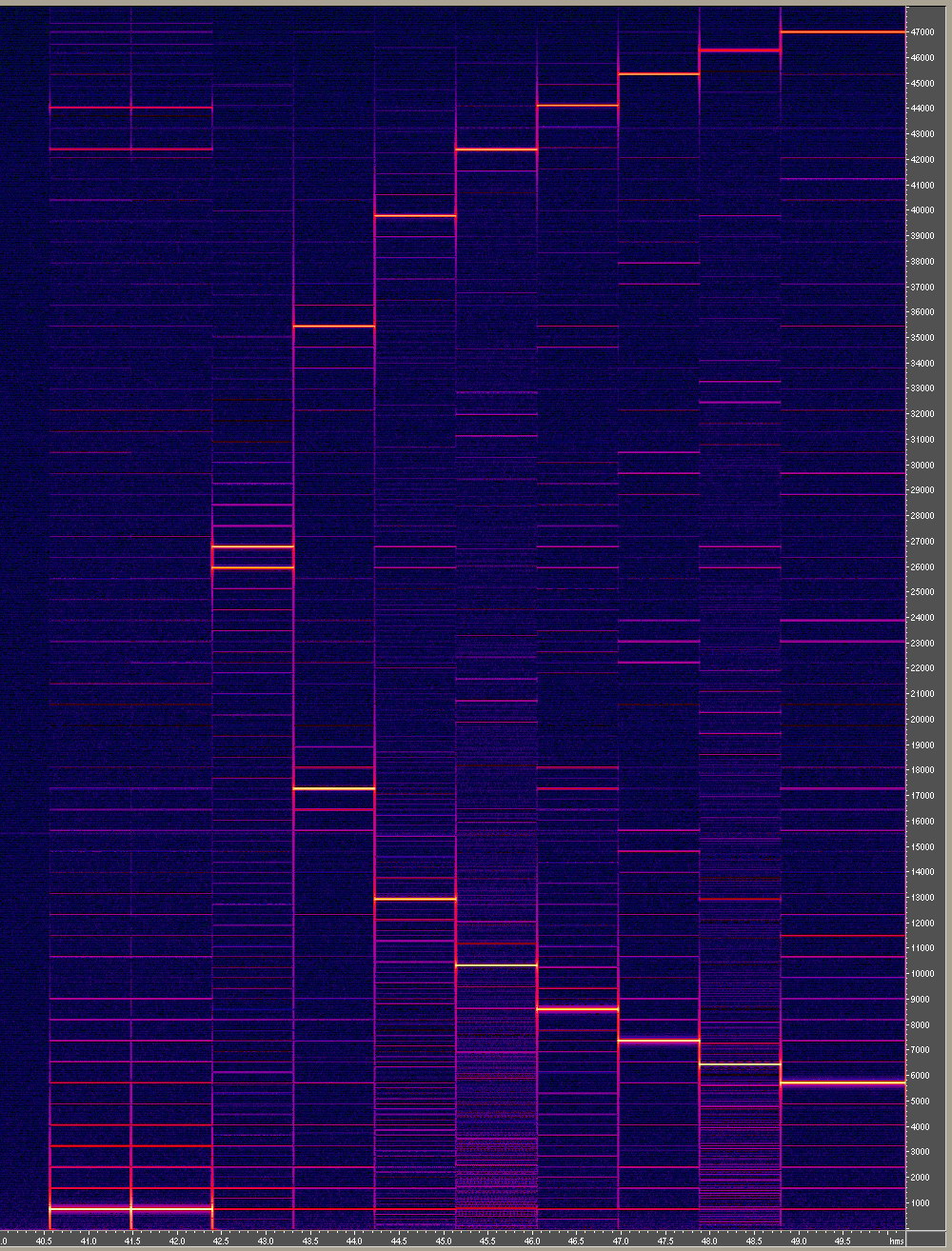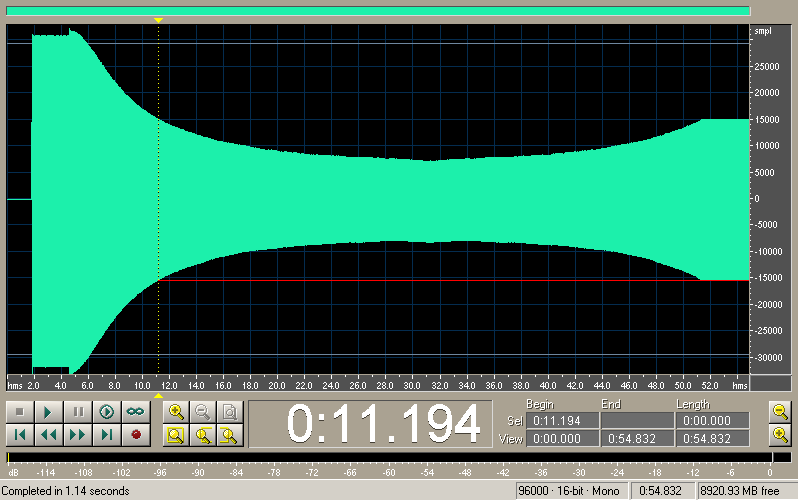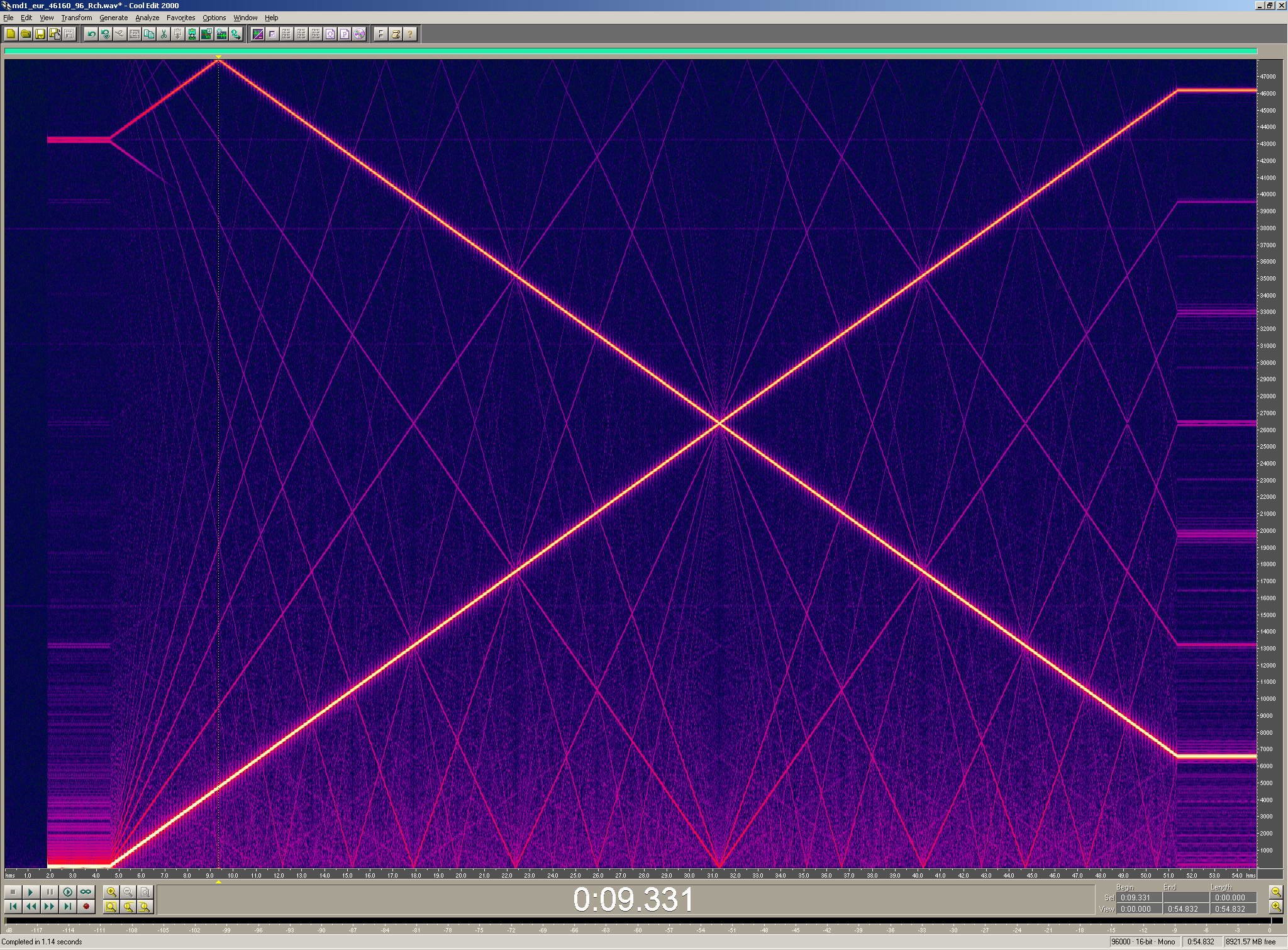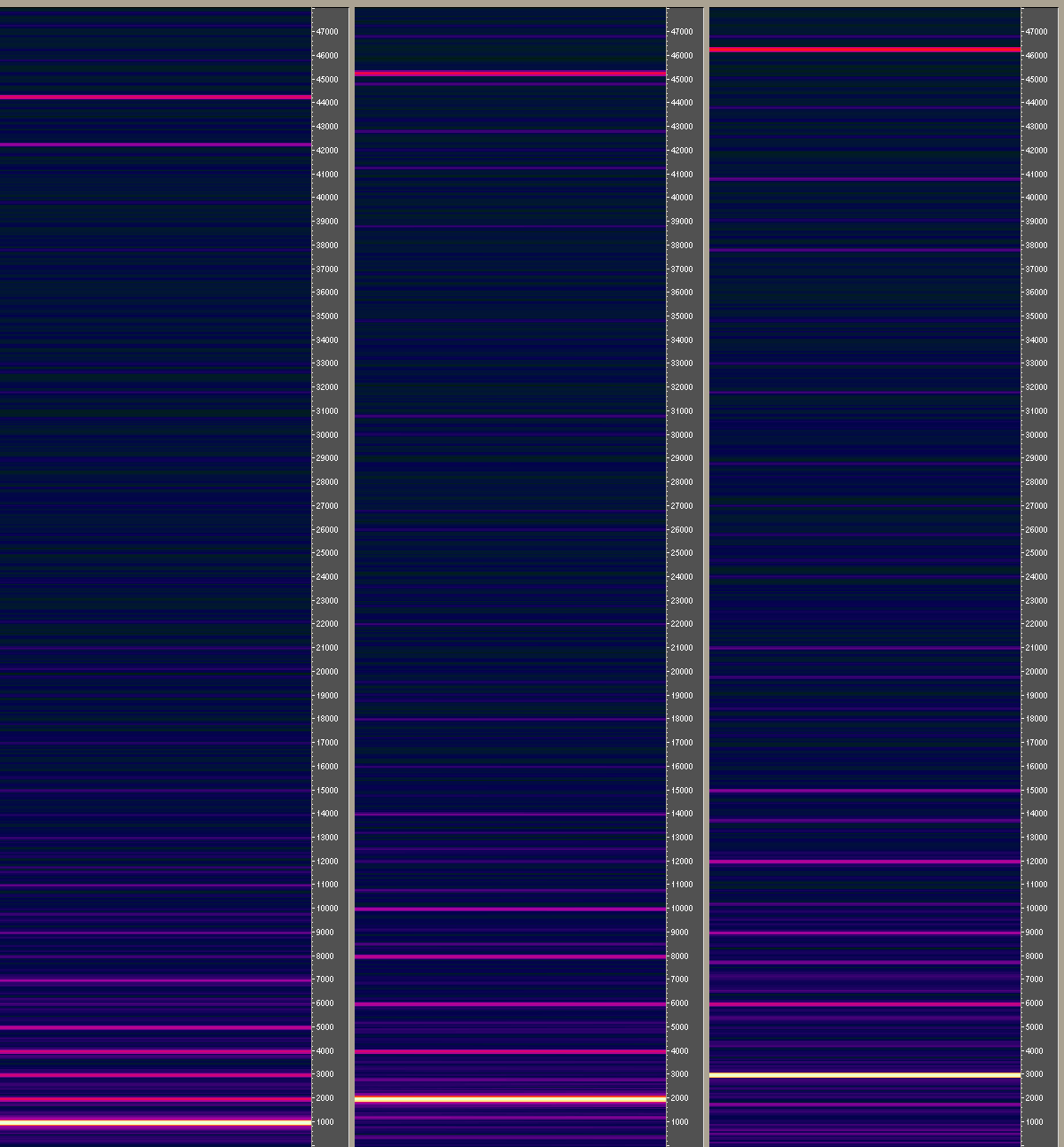I corrected files in that archive:
http://shedevr.org.ru/ghost/ym2612/sweep_1000.rar
and added another demo, "mirror.asm".
I'll explain its meaning. As I mentioned it doesn't matter for YM to play frequency X or 52781-X. We know these formulas:
F-Number = 144 * freq * (2^20 / MCLOCK) / 2^(Oct - 1) / multiplier
freq = multiplier * F-Number * 2^(Oct - 1) * (MCLOCK / 2^20) / 144
MCLOCK/144 = 52781
Octave 7 gives multiplying by 64, maximum note + 1 = 2047+1 = 2048, so 2^20 / 64 / 2048 = 1048576 / 64 / 2048 = 8,
so multiplier 8, octave 7 give us frequencies up to 52781, excluding last value (it corresponds to note 2048, but highest note is 2047).
Okay, we want to see mirroring and multiplying effects and to hear low frequencies caused by these effects while our main frequencies will be high, so we won't mess "main" and "side" harmonics. So errors of low-res ADC or discrete spectrogram won't influence on our experiment and we'll hear these harmonics right in headphones.
As MASTER_FREQ corresponds to note 2048, we can operate with integer numbers.
If our freq is x, then it's multiple freqs are n*x and its mirrors are 2048-n*x. The lowest mirror will be 2048-n*x = 2048 mod x.
I want x to be multiple of some first integers (2,3,5,7...), the lowest multiple of 2..7 is 420, but 2048 mod 420 = 368, it corresponds 9 khz, it's not a good choice
If we exclude 5 then we get 84 (420/5) and this is very good number:
2048 mod 84 = 32 = 825 Hz
Mirror of 32 is 2016 and it is multiple of 2,3,4,6,7,8,9!
So I wrote this demo with dividing note 2016 by numbers from 1 to 9. And firstly it plays note 32.
Here's spectrogram (Cool Edit 1, Blackman's algorithm, 2048 bands, Range 140 dB):

As you can see, notes 32 and 2016 (first two columns) are identical. All divisors give phantom of note 32 (825 Hz at the bottom of spectrogram), except 5 - it makes phantom of 33 (850 Hz).
And, starting from divisor 4 there is some sort of ladder steps proportionally between main and mirrored harmonics. Divisor 4 has 1 "pair of steps", divisor 5 has 2 "pairs", etc., last divisor (9) has 6 pairs.
Listening to HW we can hear the same note (excluding divisor 5) in various octaves - that prooves presenting of 825 Hz freq and its multiples.



